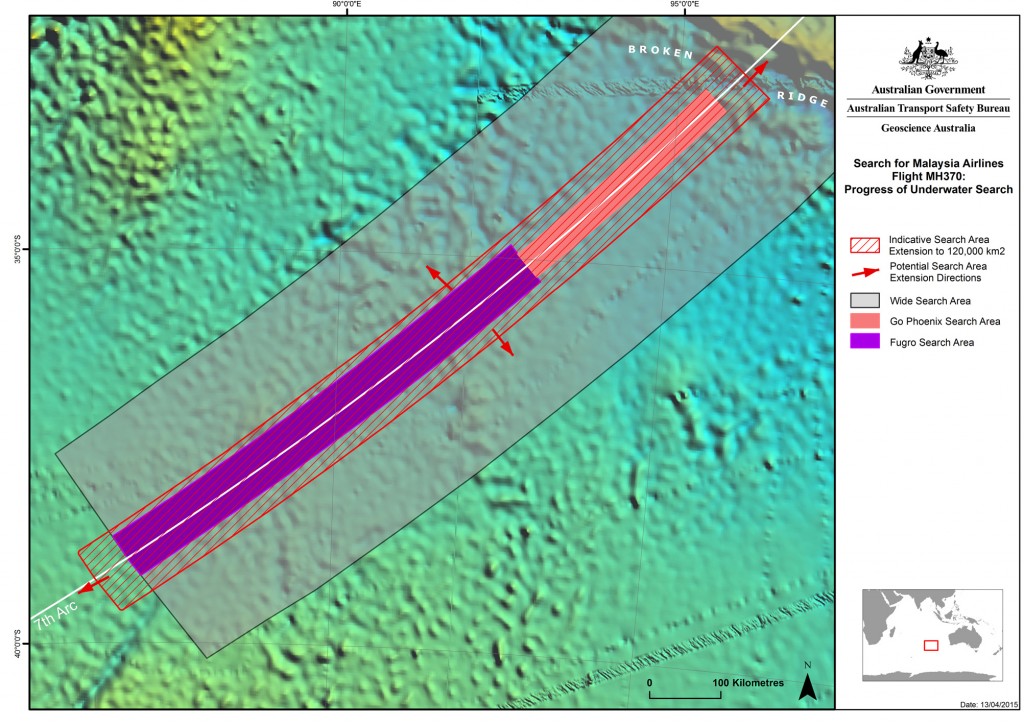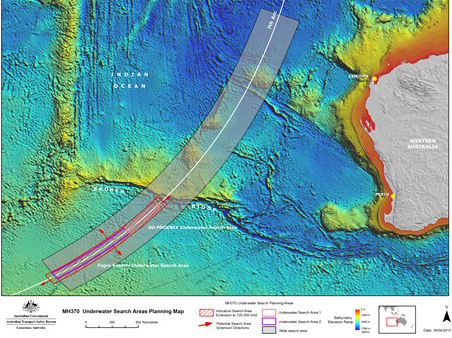Three of four vessels involved in the search for missing Malaysia Airlines flight MH370 have been away from the search area this week for scheduled resupply.
Underwater search on the Indian Ocean floor, started 6 October 2014, have involved 4 vessels - GO Phoenix, Fugro Discovery, Fugro Equator and Fugro Supporter (joined in January, 2015) sweeping the seabed.
Fugro Supporter withdrew from the search last week after adverse weather started to affect automated underwater vehicle (AUV) operations and is not expected to return soon due to coming winter conditions in the southern hemisphere.
The other three vessels have been around the port of Fremantle this week for routine resupply and maintenance, said the the Joint Agency Coordination Centre (JACC), which provides weekly updates on the progress of ongoing underwater search activities.
Fugro Discovery is expected to arrive back in the search area around 21 May, and GO Phoenix is set to depart from port on May 20. Fugro Equator is expected to arrive in port in the evening of 20 May, and to depart late the next day.
The search turned up the unexpected discovery of a shipwreck on the sea floor last week.
The aircraft, a Boeing 777-200ER, flying from Kuala Lumpur to Beijing, disappeared off radar over the South China Sea, less than an hour after takeoff on 8 March 2014 with 239 people, including 12 crewmembers on board.
Over 75% of the seafloor in the initial search area (60,000 sq km) has already been searched with no clue found.
Transport Ministers from Australia, China and Malaysia announced on April 16 that they would double the current search zone to 120,000 sq km to “cover the entire highest probability area identified by expert analysis” if no trace of the missing plane is found by late May.
The search into the expanded area has already commenced, with search efforts focused in the south to take advantage of the last of the usable weather in that area.
“Expert advice is that the highest probability of locating the aircraft is within the 120,000 square kilometre search area. Beyond that, it is not possible to refine the search area to one of greater likelihood,” says JACC.
JACC also hinted that the current search zone might be re-adjusted as expert review continues.
“The Search Strategy Working Group continues to review evidence associated with MH370 which may result in further refinement of the search area,” it said.
The extended area will constitute about 95% of the calculated flight path of the plane, but searchers hope they will find a trace in the current search zone by late May.
The high priority search area has been drawn based on “handshakes” between the plane and a communications satellite.
As the plane’s transponders, which transmit the plane’s location to air traffic controllers, were manually switched off from inside the cockpit, hourly satellite pings were the only interaction kept live for hours – after which investigators believe the aircraft ran out of fuel.
Investigators said in the initial report that movements are consistent with the deliberate action of someone on the plane.
At the request of the Malaysian Government, the Australian Transport Safety Bureau (ATSB) is leading the underwater search for MH370 in the southern Indian Ocean.








